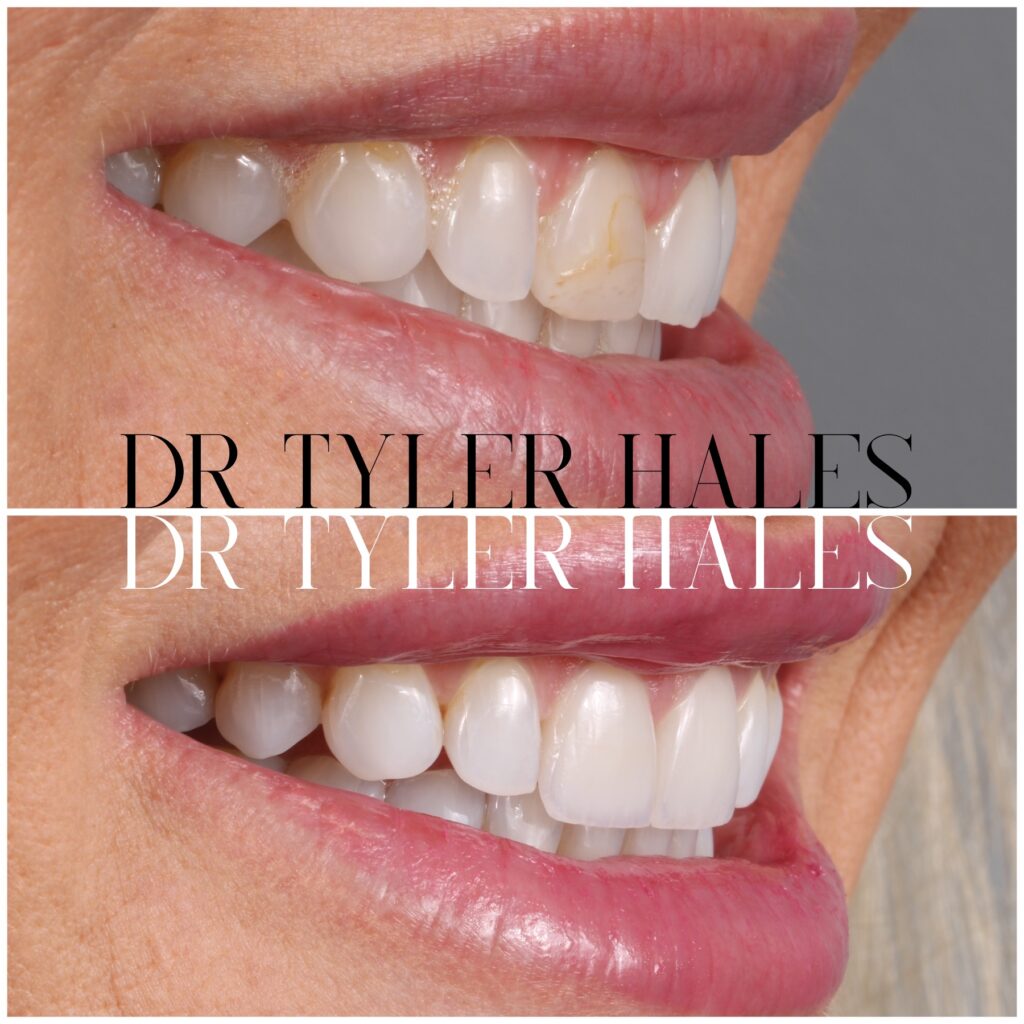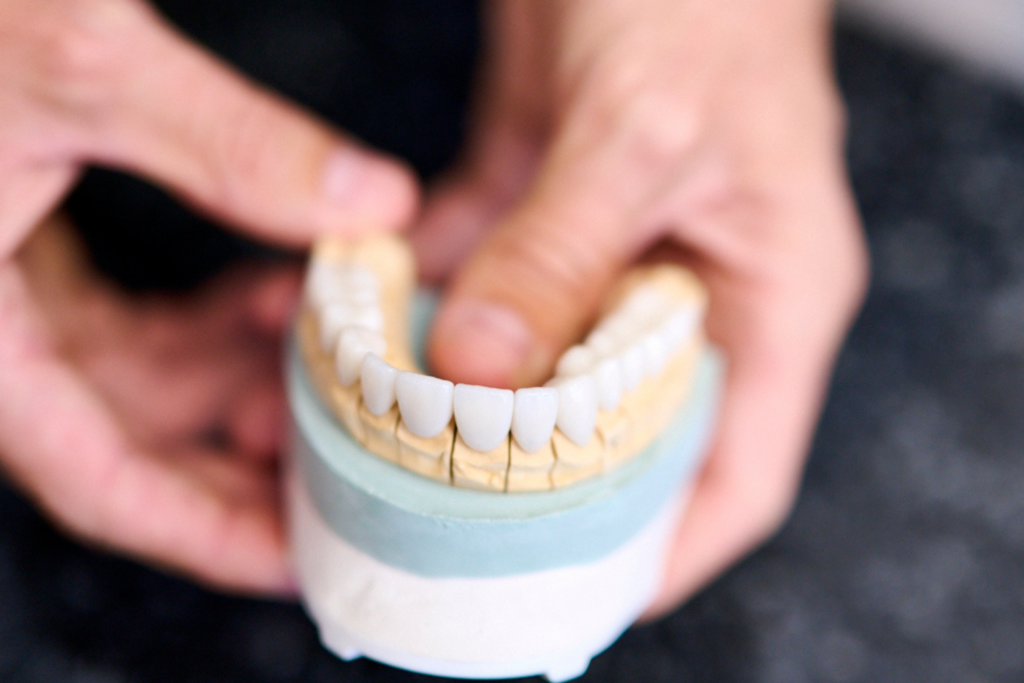When considering veneers to enhance your smile, a common question arises: Does it hurt getting veneers? Veneers are a popular cosmetic dentistry solution that can transform your teeth, but the potential discomfort involved in the process often concerns patients. The short answer is no. In this blog, we’ll explain why it doesn’t hurt to get veneers, the steps involved in the procedure, and how to manage any discomfort.
Does It Hurt Getting Veneers?
The main reason people ask, “Does it hurt getting veneers?” is because the process involves shaving a very thin layer of the tooth enamel. The amount of enamel removal is typically 0.5mm to 0.7mm of the tooth surface. Now before you start getting inside your head, let’s clarify that. That thickness is about the same thickness as a contact lens. The process typically takes no more than 30 minutes, and for those who are getting treated for a single tooth, it will take less time. Now, you may be asking yourself, where can I see this part of the dental procedure in a video? Check out our video that not only answers this question, but shows you this step of the veneer process.
Before beginning treatment, your cosmetic dentist will typically apply a numbing agent or local anesthetic to ensure your comfort. Once the numbing takes effect, the procedure starts, and most patients experience no pain. If you are getting a full set of veneers (10 to 20), you might feel some gum and jaw soreness afterward.
After the anesthesia wears off, you might experience some sensitivity or discomfort, especially to hot or cold temperatures. This discomfort is usually temporary and can be alleviated with over-the-counter pain medications and by avoiding very hot or cold foods and beverages.
To ensure a smooth recovery, it’s important to follow your dentist’s aftercare instructions. These may include recommendations on oral hygiene practices, dietary restrictions, and follow-up appointments to monitor your progress.

Understanding the Dental Veneer Procedure
If you’ve read our previous blogs, you should be aware of the different types of veneers. There are two types of veneers: porcelain veneers and composite resin veneers. The gold standard is porcelain veneers, which provide more aesthetic results for 20-30 years or more.

An NIH study reported that porcelain veneers offer more predictable treatment longevity, while composite veneers, also a good option, prove less durable than porcelain.
At Hales Aesthetic, Dr. Hales’s process for veneers can be broken down into 4 steps.
- Step 1: Initial Consultation
The first step in getting veneers is a consultation. During this visit, Dr. Hales will evaluate your teeth, discuss your goals, and determine if veneers are the right option for you.
- Step 2: Tooth Preparation (Smile Design/ Veneer Test Drive)
The next step involves preparing your teeth for the veneers. This typically includes removing a thin layer of enamel from the surface of your teeth to make room for the veneers. Dr. Hales will use a local anesthetic to numb the area, ensuring that you feel minimal discomfort during this process. This preparation is necessary to create a natural-looking and lasting fit for your veneers.
- Step 3: Temporary Veneers
After the tooth preparation, Dr. Hales will place temporary veneers while your permanent veneers are being crafted in a lab. These temporary veneers help protect your teeth and provide a preview of your new smile. During this phase, you may experience some sensitivity, but it is generally manageable with over-the-counter pain relievers.
- Step 4: Final Placement
Once your custom veneers are ready, you will return to Dr. Hales’s office for their placement. He’ll remove the temporary veneers, clean your teeth, and carefully bond the permanent veneers to your teeth using a strong dental adhesive. This process is typically painless, especially since your teeth are already prepared and numbed.

Managing Discomfort During and After The Procedure
Managing discomfort during and after getting veneers is straightforward and typically involves minimal pain. The numbing agents or local anesthetics used during the procedure are highly effective, ensuring that you experience only slight pressure rather than pain. Post-procedure, it is common to encounter some sensitivity, particularly to hot and cold temperatures, as your teeth adjust to the veneers. This sensitivity usually diminishes within a few days.
To help manage any discomfort, your cosmetic dentist will recommend over-the-counter pain relievers such as ibuprofen or acetaminophen. These medications are effective in alleviating mild soreness or sensitivity. It is important to note that after the procedure, you will experience tooth sensitivity. It is beneficial to avoid extremely hot or cold foods and beverages immediately after the procedure to prevent exacerbating any sensitivity.
Following your dentist’s aftercare instructions is crucial for a smooth recovery. Maintaining veneers is straightforward and involves good oral hygiene practices like brushing, flossing, and regular dental check-ups.
These guidelines often include maintaining good oral hygiene practices, such as gentle brushing and flossing, to keep your veneers and natural teeth healthy. Your dentist may also suggest dietary restrictions, advising you to avoid hard or sticky foods that could damage the veneers.
Regular follow-up appointments with your dentist will ensure that your veneers are settling well and that your oral health remains optimal. During these visits, your dentist can address any lingering sensitivity or discomfort and provide further recommendations for care.
By adhering to these steps, you can manage any discomfort associated with getting veneers effectively, allowing you to enjoy your new, beautiful smile with minimal interruption.

What Do Patients Say?
Most patients find that the discomfort associated with getting veneers is minimal and manageable. The numbing agents used during the procedure are effective in preventing pain, and any post-procedure sensitivity typically subsides within a few days. Hear what our clients are saying.
The feeling of having veneers placed is often compared to getting a filling. The key to a comfortable experience is choosing an experienced cosmetic dentist who can skillfully manage the procedure and address any concerns you may have.
FAQs
- Do veneers damage your natural teeth? Properly administered veneers involve minimal alteration and are safe for your natural teeth.
- How long do veneers last? With proper dental care, porcelain veneers can last up to 20-30 years and longer.
Final Thoughts – Does It Hurt Getting Veneers? No
In conclusion, getting veneers is a straightforward and relatively painless procedure that can dramatically enhance your smile. The advanced techniques and numbing agents used during the process ensure that patients experience minimal discomfort. While there may be some temporary sensitivity following the procedure, it is easily managed with over-the-counter pain relievers and proper aftercare.
By choosing an experienced cosmetic dentist and adhering to recommended care guidelines, you can enjoy the benefits of veneers with minimal interruption to your daily life. Veneers not only improve the aesthetics of your teeth but also boost your confidence, making the brief and manageable discomfort well worth the stunning results. If you have any concerns or questions, consult with your dentist to ensure you are fully informed and comfortable with the procedure.






